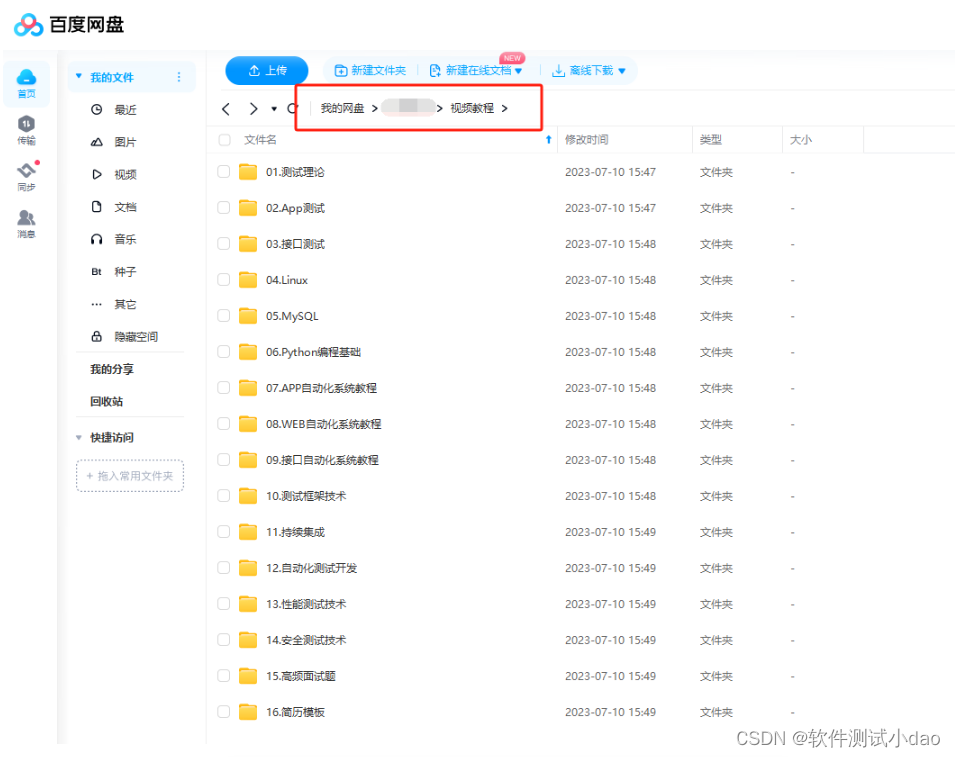Pytest断言的具体使用
Pytest使用的断言是使用python内置的断言assert。Python assert(断言)用于判断一个表达式,在表达式条件为 false 的时候触发异常。即pytest测试结果为False的断言为断言失败即测试用例执行失败,反之为断言成功即测试用例执行成功。
断言使用场景:
- 为测试结果作断言
- 为断言不通过的结果添加说明信息
- 为预期异常作断言
- 为失败断言作自定义说明信息
assert断言方法
assert关键字后面接表达式,常用的assert断言方法如下:
- 判断xx为真:assert xx
- 判断xx不为真:assert not xx
- 判断b包含a:assert a in b
- 判断b不包含a:assert a not in b
- 判断a等于b:assert a == b
- 判断a不等于b:assert a != b
示例:
| 1 2 3 4 5 6 7 8 |
|
| 1 2 3 4 5 6 7 8 9 10 11 |
|
异常断言Excepiton
异常断言即为断言抛出的异常是预期的异常,执行的测试用例是成功的。
使用pytest.raises()作为上下文管理器。当抛出异常时,可获取到对应的异常实例,然后断言它抛出的异常是不是预期的异常。当代码抛出异常时,如果和raises指定的异常类相匹配,则断言不会失败。
官方文档:How to write and report assertions in tests — pytest documentation
?with pytest.raises()执行结束后会生成一个ExceptionInfo的实例对象,该对象包含type , value, traceback属性。
| 1 2 3 4 |
|
注意:断言type的时候,异常类型是不需要加引号的。断言value值的时候需转换str类型,value属性可作异常的说明信息。
示例如下:
| 1 2 3 4 5 6 7 8 9 10 |
|
with pytest.raise(ZeroDivisionError)用于对于故意测试异常代码的情况(已知异常),断言通过用例执行成功显示passed,不通过会显示failed。
示例如下:
| 1 2 3 4 5 6 7 8 9 10 11 12 13 14 15 16 17 18 19 20 21 22 23 24 25 26 27 28 29 30 31 32 |
|
| 1 2 3 4 5 6 7 8 9 10 11 12 13 14 15 16 17 18 19 20 21 22 23 24 25 26 |
|
可将match关键字参数传递给上下文管理器pytest.raises(),来测试正则表达式与异常的信息表达形式是否匹配。match方法相当于re.search功能。
注意:这种方法只能断言value,不能断言type。
示例如下:
| 1 2 3 4 5 6 7 8 9 10 |
|
pytest. raised()函数还有另一种形式,在这里传递一个函数,该函数将使用给定的*args和**kwargs执行,并断言引发了给定的异常。在没有异常或错误异常的情况下,报告器将为您提供有用的输出。
| 1 |
|
断言某个测试用例中可能出现多个不同的预期异常的解决办法:
在with pytest.raises()中传入异常类型的参数,从传入一个异常类型,改变为传入一个异常类型组成的元组。同样只是传入一个参数。
示例如下:
| 1 2 3 4 5 6 7 8 9 10 11 12 13 14 15 16 17 18 19 20 21 22 23 24 25 |
|
检查断言装饰器
检查异常装饰器@pytest.mark.xfail():用于对于检查未修复的错误,即可能发生的异常。断言通过用例执行成功会显示xfailed,不通过显示failed。
作用:检查是否有异常,不确定是否有异常。
示例如下:
| 1 2 3 4 5 |
|
| 1 2 3 4 |
|
?现在我也找了很多测试的朋友,做了一个分享技术的交流群,共享了很多我们收集的技术文档和视频教程。
如果你不想再体验自学时找不到资源,没人解答问题,坚持几天便放弃的感受
可以加入我们一起交流。而且还有很多在自动化,性能,安全,测试开发等等方面有一定建树的技术大牛
分享他们的经验,还会分享很多直播讲座和技术沙龙
可以免费学习!划重点!开源的!!!
qq群号:485187702【暗号:csdn11】最后感谢每一个认真阅读我文章的人,看着粉丝一路的上涨和关注,礼尚往来总是要有的,虽然不是什么很值钱的东西,如果你用得到的话可以直接拿走!?希望能帮助到你!【100%无套路免费领取】


本文来自互联网用户投稿,该文观点仅代表作者本人,不代表本站立场。本站仅提供信息存储空间服务,不拥有所有权,不承担相关法律责任。 如若内容造成侵权/违法违规/事实不符,请联系我的编程经验分享网邮箱:chenni525@qq.com进行投诉反馈,一经查实,立即删除!
- Python教程
- 深入理解 MySQL 中的 HAVING 关键字和聚合函数
- Qt之QChar编码(1)
- MyBatis入门基础篇
- 用Python脚本实现FFmpeg批量转换
- 青少年CTF-qsnctf-Web-PingMe02
- 学生成绩管理系统升级版(c语言)
- Apache Commons VFS(虚拟文件系统)使用详解
- 主编夜话,2023 技术圈儿大事件盘点丨 RTE 开发者日报 Vol.115
- 百度地图添加查询框
- LIO-SAM 论文阅读
- Java学习笔记——throws 和 throw 的区别
- 一文学会dockers安装 (附docker安装MySQL、Redis)
- 【算法】动态规划(dp问题),持续更新
- 【Proteus仿真】【STM32单片机】超声波测距系统